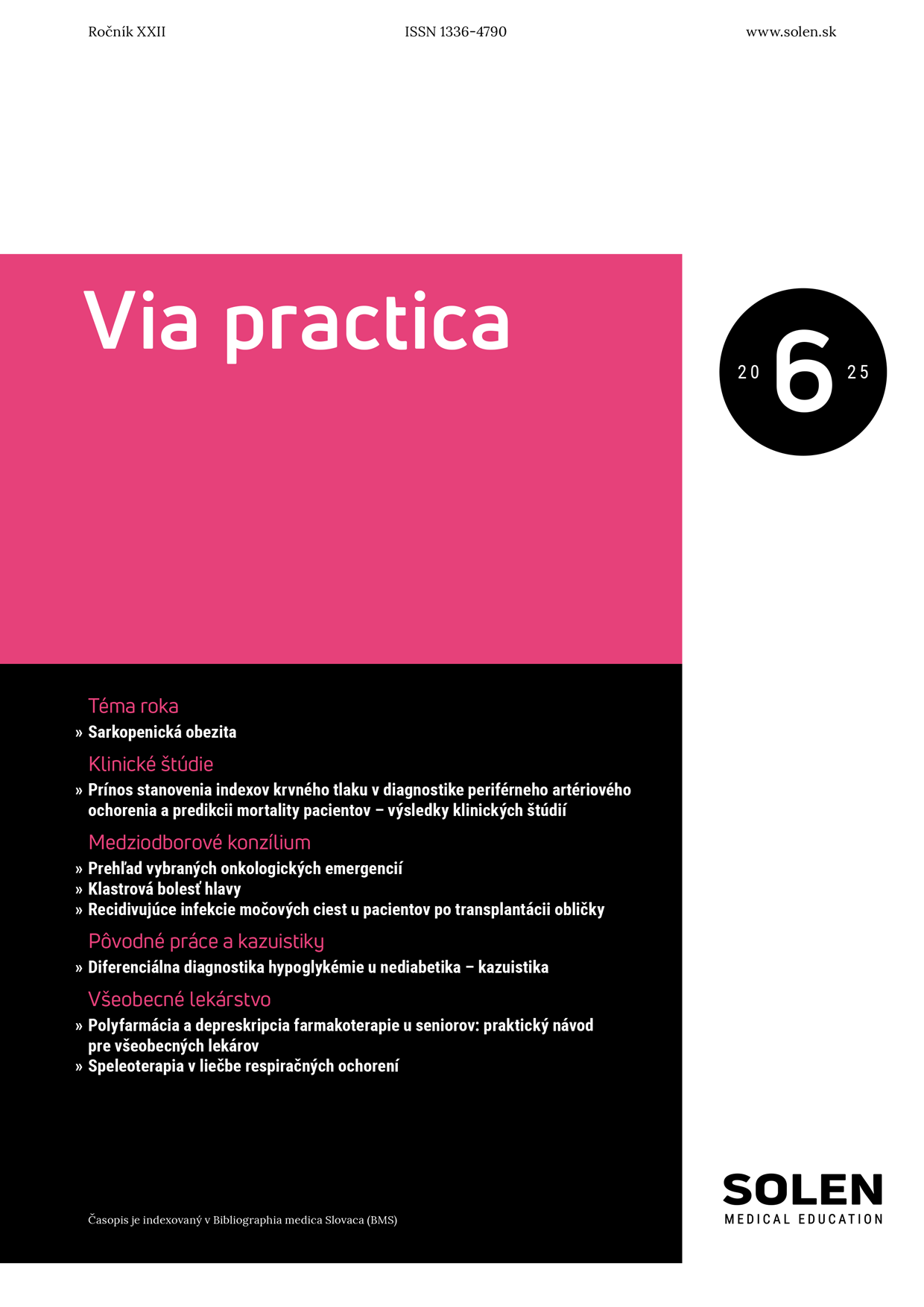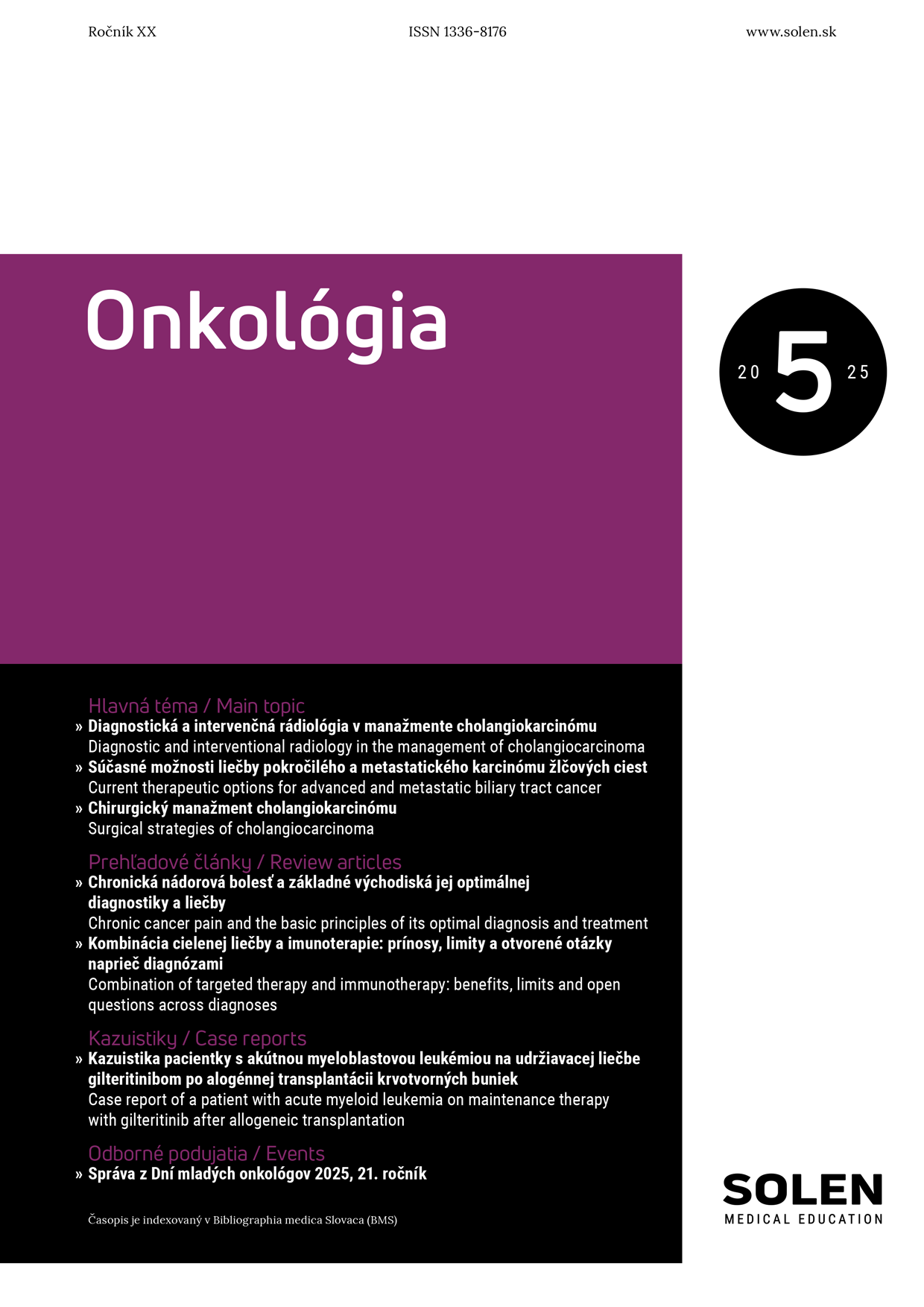Via practica 5/2017
Chronic hepatopathy as a long-term false diagnosis in adult form of Pompe disease
Pompe disease is a rare inherited autosomal recessive metabolic disorder caused by deficiency of lysosomal acid alfa-glucosidase (GAA) activity. It is characterised by the accumulation of glycogen in muscle tissue that leads to progressive muscle weakness – myopathy. In general, there is a good correlation between the severity of residual enzyme activity and the severity of clinical phenotype. Infantile form has no residual enzyme activity and is associated with severe muscle weakness, cardiomyopathy, hepatopathy and death occurs usually within the first year. Juvenile form has an onset in child age, has some residual GAA activity (3 – 10%) and a severe progressive myopathy. Adult form is the most frequent, over 80 % patients have the late-onset Pompe disease. Adult form has some residual GAA activity (10 – 25 %). The clinical hallmark of adult-onset Pompe disease is slowly progressive myopathy. However, some adult forms present themselves with certain phenotypic diversity which causes difficulties in diagnosing and diagnostic pitfalls. The course of adult-onset form was usually progressive, disabling and often fatal. There was no treatment for Pompe disease until the end of 20th century. The recent development in enzymatic replacement therapy with recombinant alfa-glucosidase has dramatically improved the life expectancy and quality of life with improvements of muscle motor and muscle respiratory functions. The best results are achieved in patients with Pompe disease diagnosed in early stages. Misdiagnosis of GGA deficiency delays the recognition of Pompe disease. Late diagnosis in advanced stages deprives the benefits of enzymatic replacement therapy with significant impact on patients´ prognosis. Therefore, early diagnosis of late-onset Pompe disease is of crucial importance. Dried blood spot test provides a rapid and reliable screening method for determination of GGA deficiency and its use should be a routine procedural component of clinical practice. The diagnosis of Pompe disease is definitively confirmed by measurement of decreased enzyme activity in leukocytes or muscle tissue, and by DNA testing, verification of pathogenic mutations in gene for GAA. Adult form is characterised by heterogeneity of muscle symptoms causing in many patient`s diagnostic pitfalls. The most frequent false diagnosis are the neuromuscular diseases imitating Pompe disease – muscular dystrophies, chronic polymyositis, myotonic dystrophy, adult form of spinal muscular dystrophy, etc. We present an unusual case-report of a patient with late-onset Pompe disease being falsely diagnosed for some years as chronic hepatopathy on a basis of elevated AST and ALT in sera, while the levels of bilirubin and GMT have been all the time in normal values. Such elevations of ALT and AST are known to be of myogenic origin. However, the creatinkinase activity was not investigated even when the patient developed manifest muscle symptoms. Lastly, when the patient was admitted to a regional Department of Neurology, the investigations revealed myopathy and elevated CK activity. The patient was referred to the Slovak Centre for Neuromuscular Diseases. The dried blood spot test, enzyme measurement of enzyme activity in leukocytes and DNA verification of pathogenic mutation in GAA gene confirmed the diagnosis of Pompe disease. The patient has been on enzymatic replacement therapy for two years and the manifest muscle symptoms have mildly improved.
Keywords: adult form of Pompe disease, AMT, AST elevation, false hepatopathy diagnosis, myopathy development, hyperCKemia, enzymatologic and DNA diagnosis of Pompe disease, enzymatic replacement therapy

















